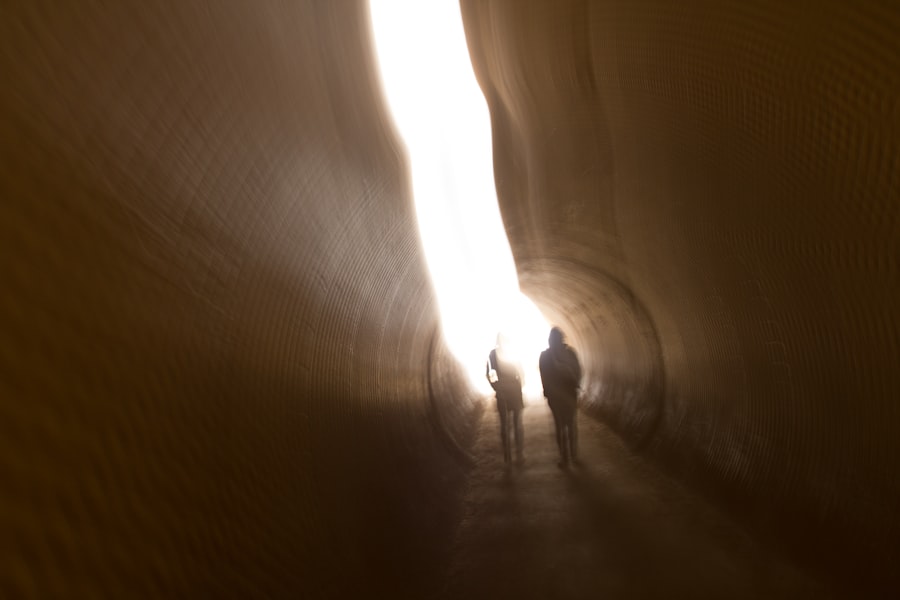The Drake Passage, a body of water that separates South America from Antarctica, is renowned for its tumultuous seas and unpredictable weather. Named after the English explorer Sir Francis Drake, who navigated these waters in the late 16th century, the passage has become a focal point for maritime exploration and scientific research. Stretching approximately 600 miles, it serves as a critical conduit for ocean currents and plays a significant role in the global climate system.
The passage is not only a geographical marvel but also a testament to the challenges faced by explorers and adventurers throughout history. As one of the most notorious maritime routes in the world, the Drake Passage has captured the imagination of sailors, scientists, and travelers alike. Its reputation for fierce storms and high waves has led to a mix of awe and trepidation among those who dare to traverse its waters.
The passage is often described as the point where the Atlantic and Pacific Oceans collide, creating a unique environment that is both beautiful and perilous. Understanding the complexities of this region is essential for anyone interested in maritime navigation, wildlife conservation, or the history of exploration.
Key Takeaways
- The Drake Passage is a treacherous body of water located between South America’s Cape Horn and the South Shetland Islands of Antarctica.
- The geography and climate of the Drake Passage are characterized by strong winds, rough seas, and unpredictable weather patterns due to its location as a funnel for the Antarctic Circumpolar Current.
- The Drake Passage holds historical significance as a route for early explorers and has been the site of many expeditions, including those of Sir Francis Drake and Charles Darwin.
- Navigating the Drake Passage poses challenges and dangers such as extreme weather conditions, icebergs, and strong currents, making it one of the most challenging maritime routes in the world.
- Strategies for safe passage through the Drake Passage include careful route planning, experienced crew, and modern navigation aids to mitigate the risks associated with crossing.
Understanding the Geography and Climate of the Drake Passage
Geographically, the Drake Passage is situated between Cape Horn at the southern tip of South America and the Antarctic Peninsula. This narrow stretch of water is characterized by its deep oceanic trenches and strong currents, which are influenced by the confluence of various oceanic systems. The passage is not only a vital link between two continents but also a significant area for marine biodiversity.
The underwater topography includes steep continental shelves and deep-sea canyons, creating habitats for a variety of marine species. The climate of the Drake Passage is notoriously volatile, with conditions that can change rapidly. The region experiences strong winds, particularly during the winter months, which can lead to rough seas and challenging navigation conditions.
The average temperature in the passage varies significantly, with colder temperatures prevailing closer to Antarctica. This harsh climate has shaped the ecosystems within the passage, making it a unique environment where cold-water species thrive alongside migratory species from warmer waters. Understanding these geographical and climatic factors is crucial for those who wish to navigate or study this remarkable area.
Historical Significance and Exploration of the Drake Passage

The historical significance of the Drake Passage cannot be overstated. It has been a critical route for explorers since the Age of Discovery, serving as a gateway to Antarctica and beyond. Sir Francis Drake’s expedition in 1578 marked one of the first recorded crossings of this treacherous waterway, paving the way for future explorers.
His journey not only demonstrated the potential for maritime navigation in these challenging waters but also highlighted the importance of the passage in global trade routes. Throughout history, many notable explorers have ventured into the Drake Passage, each contributing to our understanding of this formidable region. The passage became a key route for whalers and sealers in the 19th century, as they sought resources in the rich waters surrounding Antarctica.
Additionally, scientific expeditions have utilized this route to study oceanography, climate change, and marine biology. The legacy of exploration in the Drake Passage continues to inspire modern adventurers and researchers who seek to uncover its mysteries.
Challenges and Dangers of Navigating the Drake Passage
| Challenges and Dangers | Drake Passage |
|---|---|
| Strong Winds | Experiencing winds up to 70 mph |
| Rough Seas | Encountering waves up to 30 feet high |
| Icebergs | Potential risk of encountering icebergs |
| Narrow Passage | Constricted route between South America and Antarctica |
| Isolation | Lack of nearby assistance in case of emergency |
Navigating the Drake Passage presents numerous challenges that can test even the most experienced mariners. The unpredictable weather patterns are perhaps the most daunting aspect, with storms capable of developing with little warning. High winds and towering waves can create dangerous conditions that have led to numerous shipwrecks throughout history.
Mariners must be prepared for sudden changes in weather and sea state, making careful planning and real-time monitoring essential for safe passage. In addition to weather-related challenges, the geography of the passage itself poses risks. The strong currents that flow through this region can create treacherous conditions for vessels attempting to navigate its waters.
Icebergs and floating debris are also common hazards, particularly during certain times of the year when ice melts from Antarctica. These dangers necessitate a thorough understanding of navigation techniques and an appreciation for the power of nature in this remote part of the world.
Strategies for Safe Passage through the Drake Passage
To ensure safe passage through the Drake Passage, mariners must employ a variety of strategies that account for its unique challenges. One crucial approach is meticulous planning before embarking on a journey. This includes studying weather forecasts, understanding tidal patterns, and familiarizing oneself with navigational charts specific to the region.
Experienced captains often recommend setting sail during periods of favorable weather to minimize risks associated with storms. Another important strategy involves maintaining constant communication with other vessels and monitoring maritime traffic in real-time. Utilizing modern technology such as satellite communication systems can provide valuable updates on weather conditions and potential hazards.
Additionally, vessels should be equipped with safety gear and emergency supplies to address any unforeseen circumstances that may arise during transit. By combining traditional navigation skills with modern technology, mariners can enhance their chances of safely crossing this formidable passage.
Importance of the Drake Passage for Wildlife and Conservation

The Drake Passage is not only significant for navigation but also plays a vital role in supporting diverse marine ecosystems. The nutrient-rich waters foster an abundance of marine life, including krill, which serves as a crucial food source for various species such as whales, seals, and seabirds. The passage acts as a migratory route for many animals, making it an essential area for biodiversity conservation efforts.
Conservation initiatives in the Drake Passage focus on protecting these vital ecosystems from threats such as overfishing, pollution, and climate change. Organizations dedicated to marine conservation work tirelessly to raise awareness about the importance of preserving this unique environment. By promoting sustainable practices and advocating for protected marine areas, these efforts aim to ensure that future generations can continue to experience the rich biodiversity that thrives within the passage.
Tips for Travelers and Adventurers Crossing the Drake Passage
For travelers and adventurers planning to cross the Drake Passage, preparation is key to ensuring a safe and enjoyable experience. First and foremost, it is essential to choose a reputable tour operator with experience navigating these waters.
Travelers should bring layers of clothing suitable for varying weather conditions, as temperatures can fluctuate dramatically throughout the day. Waterproof gear is highly recommended due to the potential for splashes from waves or rain showers.
Additionally, travelers should consider bringing seasickness medication or remedies, as many individuals experience motion sickness during this crossing.
Modern Technology and Navigation Aids for Crossing the Drake Passage
Advancements in technology have significantly improved navigation through the Drake Passage over recent years. Modern vessels are equipped with sophisticated navigation systems that utilize GPS technology to provide accurate positioning information. These systems allow mariners to plot their courses more effectively while accounting for changing weather conditions.
Moreover, satellite communication has revolutionized how vessels communicate while at sea. Real-time updates on weather patterns and sea conditions can be accessed instantly, enabling captains to make informed decisions about their routes. Additionally, sonar technology helps detect underwater obstacles such as icebergs or submerged rocks, further enhancing safety during navigation through this challenging waterway.
The Experience of Crossing the Drake Passage
Crossing the Drake Passage is often described as both exhilarating and daunting. For many travelers, it represents a rite of passage—a test of endurance against nature’s elements. As vessels navigate through turbulent waters, passengers may experience a range of emotions from excitement to apprehension.
The sight of towering waves crashing against the hull can be both awe-inspiring and intimidating. Despite its challenges, many adventurers find crossing the Drake Passage to be one of the most memorable parts of their journey to Antarctica. The opportunity to witness breathtaking landscapes and observe wildlife in their natural habitat adds to the allure of this crossing.
For those who embrace the adventure, it becomes an unforgettable experience that highlights both nature’s beauty and its power.
Environmental Concerns and Conservation Efforts in the Drake Passage
As awareness grows regarding environmental issues affecting our planet, attention has turned toward conservation efforts in regions like the Drake Passage. Climate change poses significant threats to marine ecosystems, leading to shifts in species distribution and habitat degradation. Rising ocean temperatures can impact krill populations—an essential food source for many marine animals—thereby affecting entire food webs.
Conservation organizations are actively working to address these challenges by advocating for sustainable fishing practices and promoting marine protected areas within the passage. Collaborative efforts among governments, scientists, and non-profit organizations aim to create policies that safeguard this vital ecosystem while allowing for responsible exploration and tourism activities.
Navigating the Drake Passage and Its Impact on Exploration and Conservation
Navigating the Drake Passage remains an enduring challenge that continues to captivate explorers and adventurers alike. Its historical significance as a route for exploration has paved the way for scientific discoveries while highlighting humanity’s relationship with nature’s forces. As modern technology enhances navigation capabilities, it also brings forth new responsibilities regarding environmental stewardship.
The importance of conservation efforts in this region cannot be overstated; protecting its unique ecosystems ensures that future generations will have opportunities to experience its wonders firsthand. As travelers embark on journeys across this remarkable waterway, they become part of a legacy that intertwines exploration with conservation—a testament to humanity’s quest for knowledge amid nature’s grandeur.
The Drake Passage is notorious for its treacherous waters, making it one of the most dangerous sea routes in the world. This narrow body of water between the southern tip of South America and Antarctica is infamous for its unpredictable weather, strong currents, and massive waves, which pose significant challenges to even the most experienced sailors. For those interested in learning more about the geographical and historical significance of the Drake Passage, a related article can be found on MyGeoQuest. This article delves into the factors that contribute to the passage’s perilous reputation and offers insights into the experiences of those who have navigated its waters. You can read more about it by visiting this link.
WATCH NOW! Drake Passage: Earth’s Deadliest Waters Revealed
FAQs
What is the Drake Passage?
The Drake Passage is the body of water between the southern tip of South America (Cape Horn) and the South Shetland Islands of Antarctica. It connects the southwestern part of the Atlantic Ocean with the southeastern part of the Pacific Ocean.
Why is the Drake Passage so dangerous?
The Drake Passage is known for its notoriously rough seas and unpredictable weather conditions. The convergence of the Atlantic, Pacific, and Southern Oceans creates strong winds and powerful currents, leading to rough seas and large waves. The area is also prone to storms and low-pressure systems, making it one of the most challenging maritime routes in the world.
What are the specific hazards of the Drake Passage?
The hazards of the Drake Passage include extreme weather conditions, high winds, strong currents, and large waves. The area is also known for its icebergs and ice floes, which pose a threat to navigation. The combination of these factors makes the passage particularly dangerous for ships and other vessels.
Are there any safety measures in place for crossing the Drake Passage?
Ships and vessels crossing the Drake Passage often take precautions such as closely monitoring weather forecasts, using advanced navigation equipment, and having experienced crew members on board. Some ships may also have ice-strengthened hulls to better navigate through ice-infested waters. Additionally, many vessels that traverse the Drake Passage are equipped with modern safety and communication systems to ensure the safety of passengers and crew.
